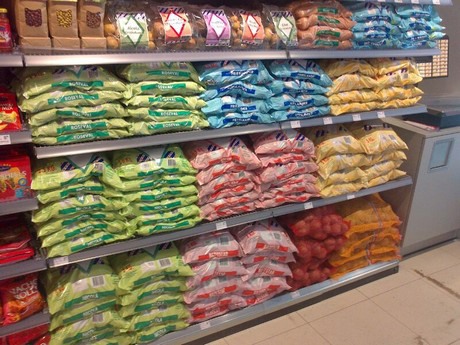Knowledge of the different varieties of potatoes - still one of the most important food crops - is crucial in determining potatoes' popularity in the long run, says Tjalke Stoelwinder of the Dutch potato wholesaler, Greydanus.
They always stick to a fixed range of varieties and invest in knowledge transfer. They see this paying off in their growing sales figures. It can be compared to purchasing wine. Someone with a little know-how’s choice of his favorite wine depends on the grape variety - Merlot, Pinot Noir, Syrah-Shiraz, and so on. Knowing the origin and variety also helps sell potatoes.

Tjalke Stoelwinder, Greydanus
A huge number of potatoes of all kinds have been developed. This variety is necessary, because the different cultivation areas in the Netherlands, the rest of Europe, and worldwide demand different characteristics from their potatoes. Consumers are also looking for different ways to prepare this product. Traditionally, a distinction is made between waxy and floury potatoes. These come in color-coded bags: blue for floury, green for waxy. Sometimes these are further divided into yellow for very floury potatoes or red for those that are very waxy.
Potato varieties offer certainty
Greydanus has kept these color codes. But, they also print the variety’s name, rather than its preparation method, on their packs. “In this way, consumers can easily determine the kind of potato they want. Ultimately, it is about what kind of potatoes are actually in the bag. Potatoes remain the number one food crop. Using tasty, recognizable varieties we ensure that every meal is enjoyable,” says Tjalke.
Only potato varieties can offer that certainty, ensuring consistent quality. Greydanus, therefore, only includes popular varieties in its assortment. This long term strategy is paying off in a market where volumes are under pressure. Greydanus sees growth, every year.
“There are so many varieties being traded. Packers often go for size and appearance. With us, the added value is in the tasty varieties and our connection with growers who still cultivate these varieties with care and knowledge. Nicola and Bildtstar are the most popular potatoes among the general public. In Friesland, Borger-Eigenheimer and Frieslander potatoes are very well-liked.”
Color codes help consumers choose a cooking type: waxy (green), very waxy (red), floury (blue), and very floury (yellow).
These days, several supermarket chains are not only taking the traditional classification based on cooking type (the blue or green bags) into consideration. There are also more and more small packs, indicating use, like mashing, frying, or roasting. The reasoning is that by telling people about potatoes uses, consumers are helped in choosing the correct potato for a specific dish.
Tjalke sees no use in this; the variety should be a guideline. “I think you help consumers more by offering a tasty potato of the correct variety. A large potato is not automatically suited to making french fries. Only varieties with a specific starch content can be used to make fries. When people do not use the correct variety, the chance of failure is high, and the fries will not taste good. This kind of negative experience will discourage people from making repeat purchases. Packers who do not pack according to the type of potato put themselves at risk. It will not benefit you in the long run.”
Playing in on emotion not convenience
Greydanus plays in on emotion rather than convenience. “Consumer knowledge is slowly disappearing. So, we are focusing on spreading information. Through storytelling, we explain the relationship between the regions and the potatoes. People want to know this. We spend money on vegetable chefs and fresh produce specialists. They are, after all, our ambassadors - transferring knowledge to the consumer. We are also often on the shop floor to support these chefs and specialists.”
 Besides color codes, Greydanus always indicates the potato variety on their packaging.
Besides color codes, Greydanus always indicates the potato variety on their packaging.
The trend toward portioned packs has not hit Friesland yet. Potatoes remain popular, and even 10kg bags are still selling well. According to Tjalke, this is further proof that the decline in potatoes’ popularity has more to do with taste than competition from other meal fillers.
“Consumers in the north like eating potatoes, as long as they are tasty. We see our buyers often. They were here three weeks ago for a one-on-one meeting. In this way, we keep up even better with what is happening. People are increasingly critical about where their products come from. They are getting a little tired of all these unknown varieties too. As long as potatoes are not packed by variety, packing companies can pack a different kind every week. It is then always a matter of waiting to see how a dish will turn out. Consumers, as well as our buyers, want more certainty. You must, therefore, make sure you have good quality goods. Then, people will keep eating your potatoes,” concludes Tjalke.
Voor meer informatie:
Tjalke Stoelwinder
t.stoelwinder@greydanus.nl
Greydanus Aardappelgroothandel & Transport BV
De Kuinder 12
8444 DC Heerenveen
Tel: 0513-681268
info@greydanus.nl
www.greydanus.nl
